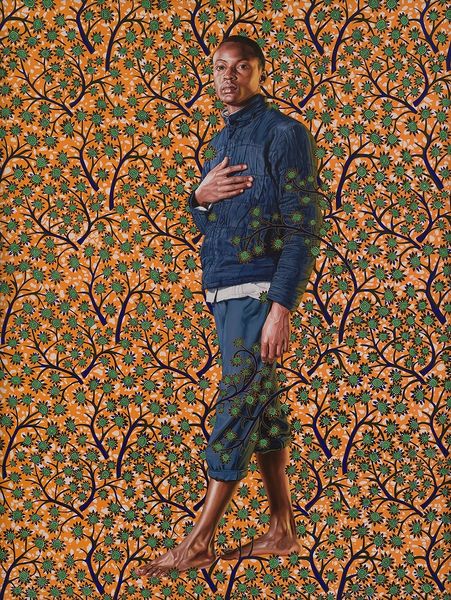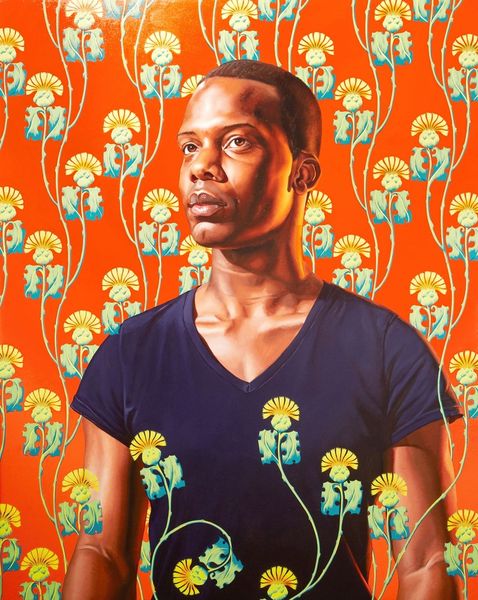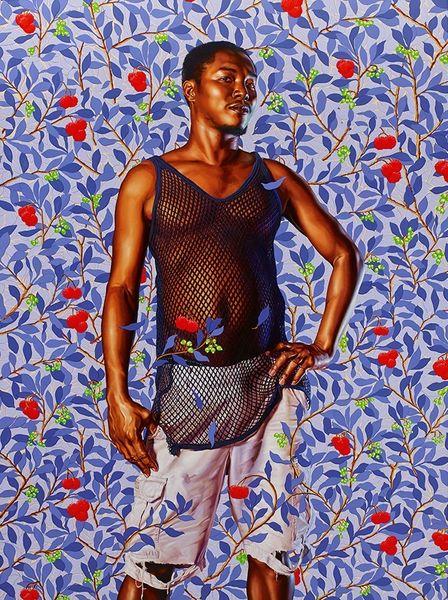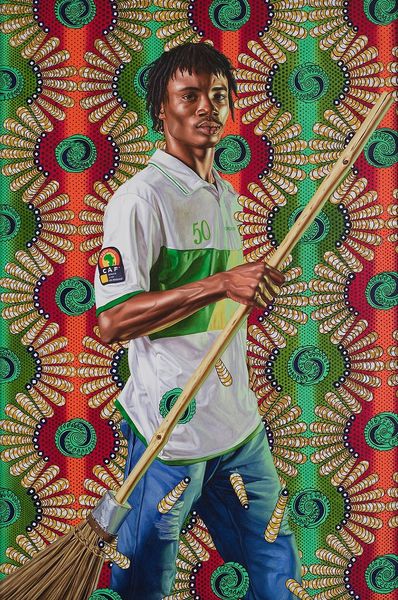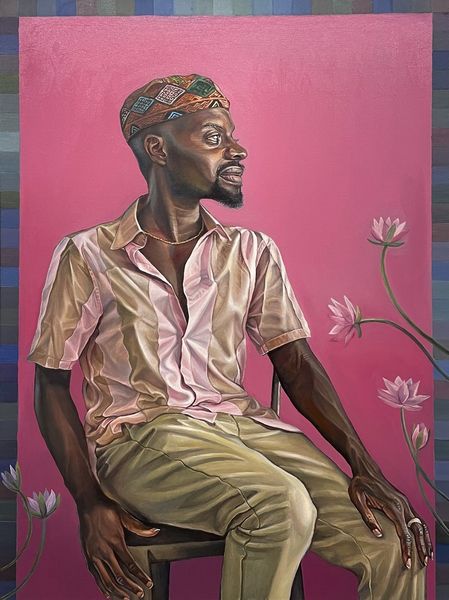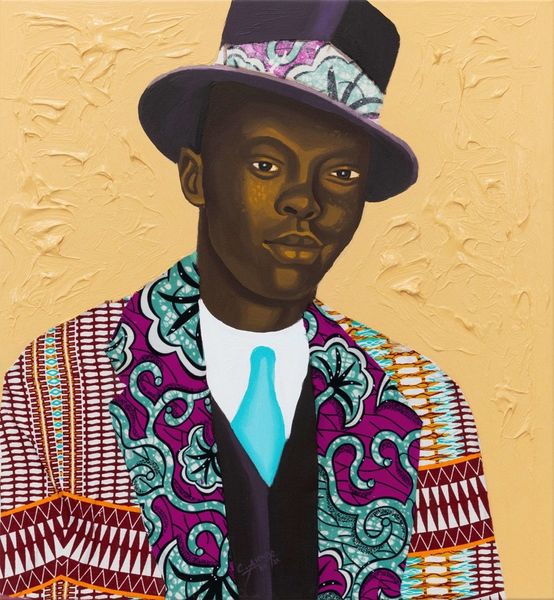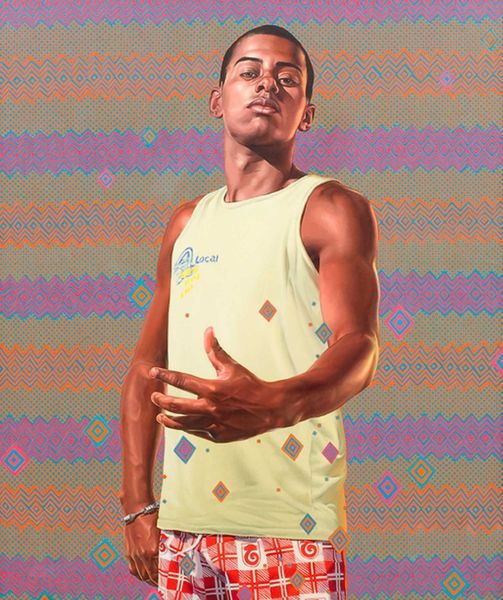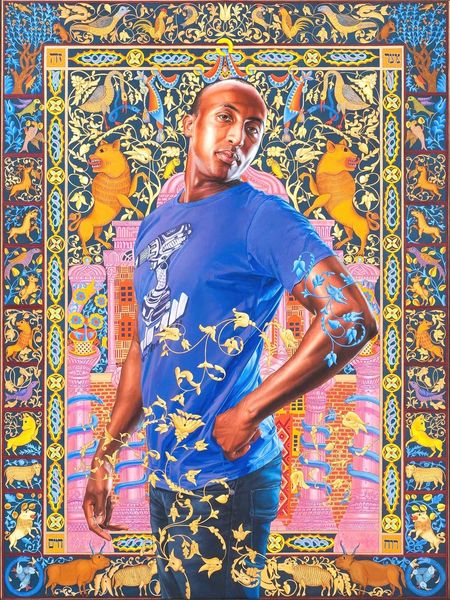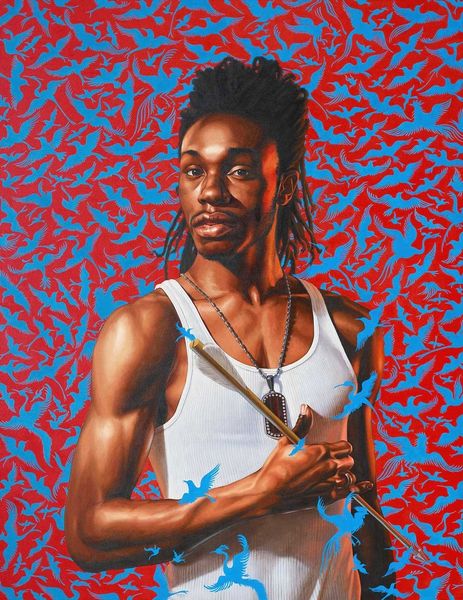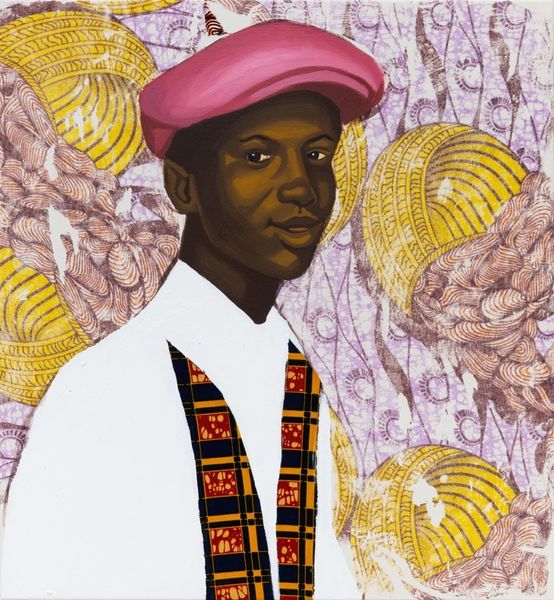
mixed-media, painting, acrylic-paint
#
portrait
#
pattern-and-decoration
#
african-art
#
figurative
#
mixed-media
#
contemporary
#
painting
#
pop art
#
acrylic-paint
#
figuration
#
pop art-influence
Copyright: Modern Artists: Artvee
Curator: Immediately, I notice the flattening of the picture plane – it's intensely decorative! Editor: Indeed. This is Kehinde Wiley’s "Woman With A Pearl" created in 2012 using mixed media including acrylic paint. Wiley often portrays contemporary Black individuals in the styles of classic portraiture, prompting intriguing dialogues across historical and social strata. Curator: The 'pearl' element immediately jumps out. That simple necklace draws on historical representation—classics like Vermeer’s "Girl with a Pearl Earring," and places the contemporary subject within that lineage. The gesture is powerful. It gives cultural memory and identity a tangible form, reframing notions of beauty and status. Editor: And considering materiality, let’s examine those patterns. I see something evocative of Dutch wax fabric and the patterns immediately situate the sitter in complex networks of global trade and colonial histories, both raw materials and finished products circulating worldwide. What appears decorative reveals itself as politically loaded. Curator: Precisely! The patterns are not simply aesthetic choices, but rather carriers of layered meanings. They speak to cultural hybridity, the blending of African, European, and American identities. It makes me consider the psychology of belonging. It gives visibility and a form of iconic status that wasn’t previously afforded to Black subjects. Editor: That touches on his working methods too. I understand that Wiley typically collaborates closely with his models, and production often relies on teams of studio assistants who skillfully render the backgrounds based on textiles, wallpaper and stencils. A fascinating blend of authorship and collaborative labor in our present-day studios. Curator: Absolutely. Seeing those repeating shapes—it is not a spontaneous aesthetic outburst but constructed carefully, and referencing past representation of women, the construction becomes so clear! The tension he sets between appropriation and celebration is where much of its symbolic weight lies. Editor: I agree. Looking closer now, the image offers layers and prompts reflection on global networks of commerce, consumption and historical visual paradigms. Thank you for teasing that out. Curator: Likewise. Wiley invites us to rethink who is memorialized and how. The echoes of the past reverberate.
Comments
No comments
Be the first to comment and join the conversation on the ultimate creative platform.


